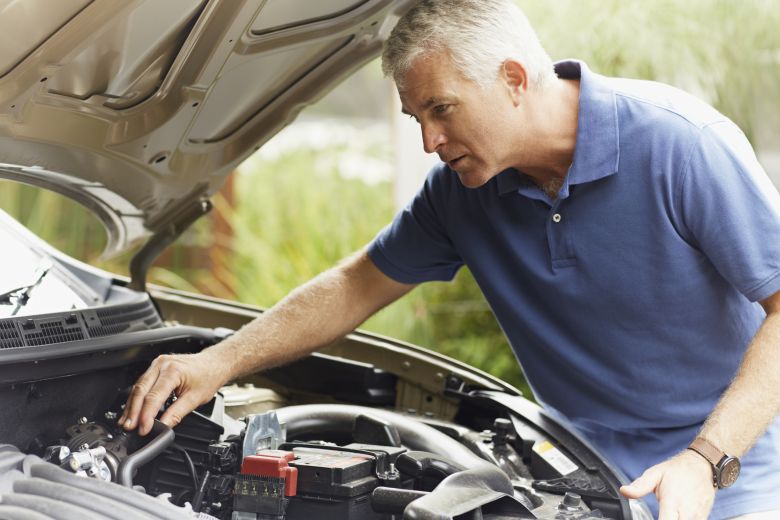Finding the engine is usually the easy bit. But getting the know how to work out the engine type, size and fuel type can be more difficult.
How to find your engine type by VIN
The most common way to find out what type of engine your vehicle has is to check your Vehicle Identification Number (VIN). It will likely be located on a stamp on the bottom of your passenger side windscreen and it is a 17 character code including numbers and letters.
This is a unique code that can be found on all vehicles after it has gone through the manufacturing process.
Within the code, it provides details on the vehicle’s make, model, year of manufacture – and the size of the engine.
Characters 4 to 8 will denote all these details. To find out what they mean, you’ll have to visit the manufacturers website and enter in the details.
Alternatively, this information will be in the owner’s manual, or a way to translate what the code means.
The of the VIN code will also show what country the vehicle was built in, the factory where it was put together, and the security code.
Can you get your engine code from VIN number?
The eigth number in the VIN number will tell the owner of the vehicle what their engine code number is. Alternatively, it can also be found in the owner's manual.
How to find your engine type by car registration number
A common misconception is the belief that your number plate contains details on the size of the engine – this is not the case.
However, when you purchase a car you will also get your V5C form.
This document will have a section dedicated to engine capacity. It is here you will find the details on your vehicle.
This can also be used to search the GOV.UK website to find this, and other relevant information.
What types of engines are there?
When you are looking to buy a vehicle, you will likely consider what type of engine you would like.
The most common options are the internal combustion engine vehicles – also known as ICE. These are petrol and diesel-powered engines.
Increasing in popularity, there are also electric vehicles, where the power is stored in a battery,
There are also hybrid engines that are a mix of ICE and EV power.
In the future, there could also be hydrogen-powered vehicles – although there are not many available today.
Car engine size by litres and cubic centimetres
If you are looking to buy a new vehicle, then you will likely be looking at the size of the engine. This will impact the cost to buy, running cost, environmental impact and performance of the vehicle.
- Small cars: This includes vehicles that have an engine size of up to 1.9 litres (1,900 cubic centimeters).
- Larger cars: These can be vehicles from 1.9 litres upwards - normally to around 2.5 litres (2,500 cubic centimeters).
- Performance cars: When it comes to vehicles with higher spec performance engines, these can start from 2.5 litre engines to over 5 litres.
Keep your engine running smoothly
The RAC recommends regular oil changes help keep your engine running smoothly and extend its life. Book an RAC Mobile Mechanic today.


What else should you be aware of?
There are several other key pieces of information that car owners should know.
Car tax band
Otherwise known as Vehicle Exercise Duty (VED), is a tax that drivers must pay every year.
The amount you must pay the Government will depend on the level of emissions your vehicle makes.
This is constantly changing so knowing your car tax is something all drivers should be aware of. This will start to impact EV drivers in 2025.
Emissions
Following on from the above, the amount of emissions your vehicle produces. Not only does this impact your car tax band, but also clean air zone driving – and maybe where you can park in the future.
MOT
The Ministry of Transport (MOT) test is an annual inspection of your vehicle, carried out by a mechanic, to ensure that your car is road legal.
You will need to pass and keep your documents up to date.
Servicing
Unlike the MOT, servicing your vehicle isn’t a legal requirement, but it is an important part of maintaining your car.
Keeping up-to-date documents on when and where servicing has been carried out is important for many reasons.
Insurance
Another annual legal requirement, car insurance is an agreement where you get financial protection against financial loss should your vehicle get in an accident or damage occurs on the vehicle.
Knowing your car insurance details is crucial something all drivers should have to hand, should the worst happen.
If you have any questions about car engine sizes, VIN numbers, or the registration on a vehicle – leave them in the comments below.

RAC sale – up to 33% off*
• Roadside cover from £5.29 a month†
• We get to most breakdowns in 60 mins or less
• Our patrols fix 4/5 breakdowns on the spot

Book a glow plugs repair
If your diesel engine is having trouble starting, especially in cold weather, it could be faulty glow plugs. Book an RAC Mobile Mechanic today.












